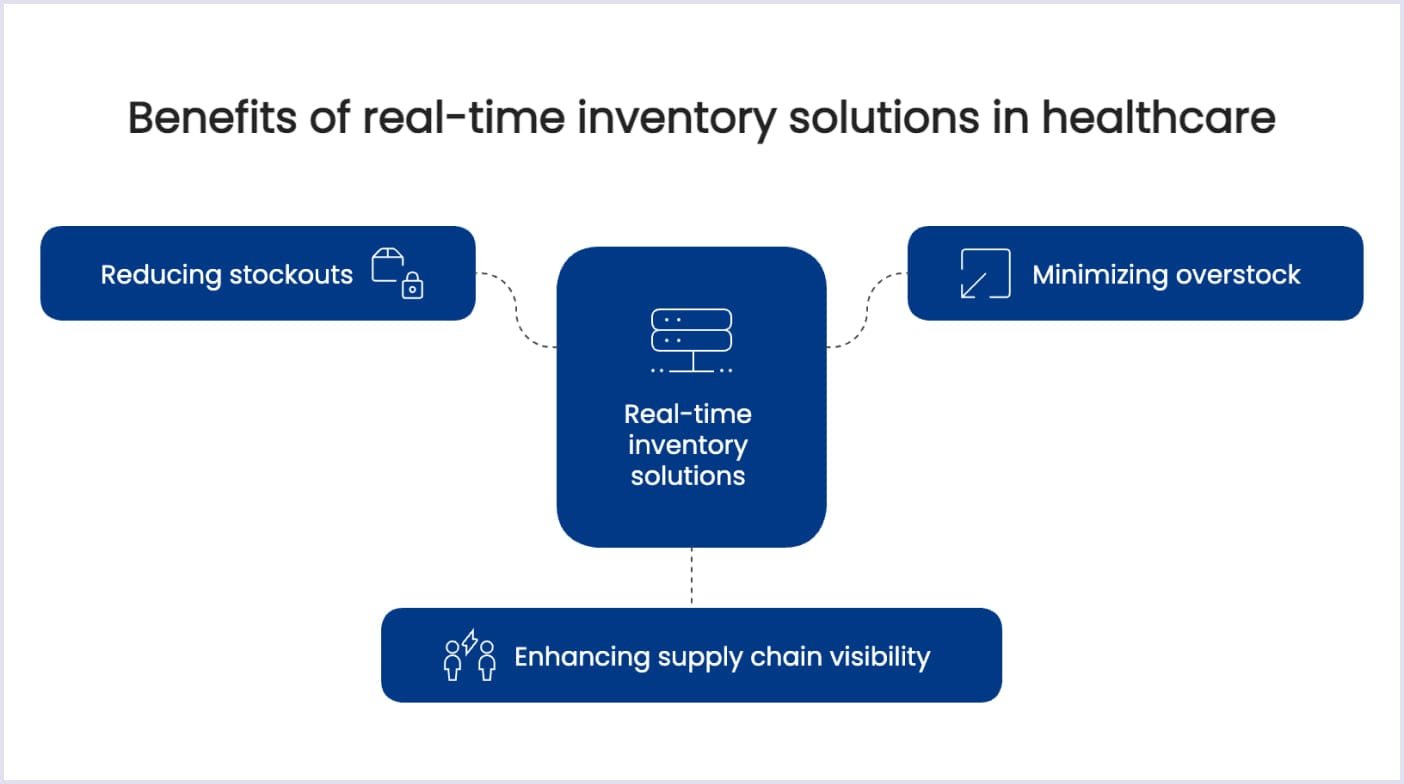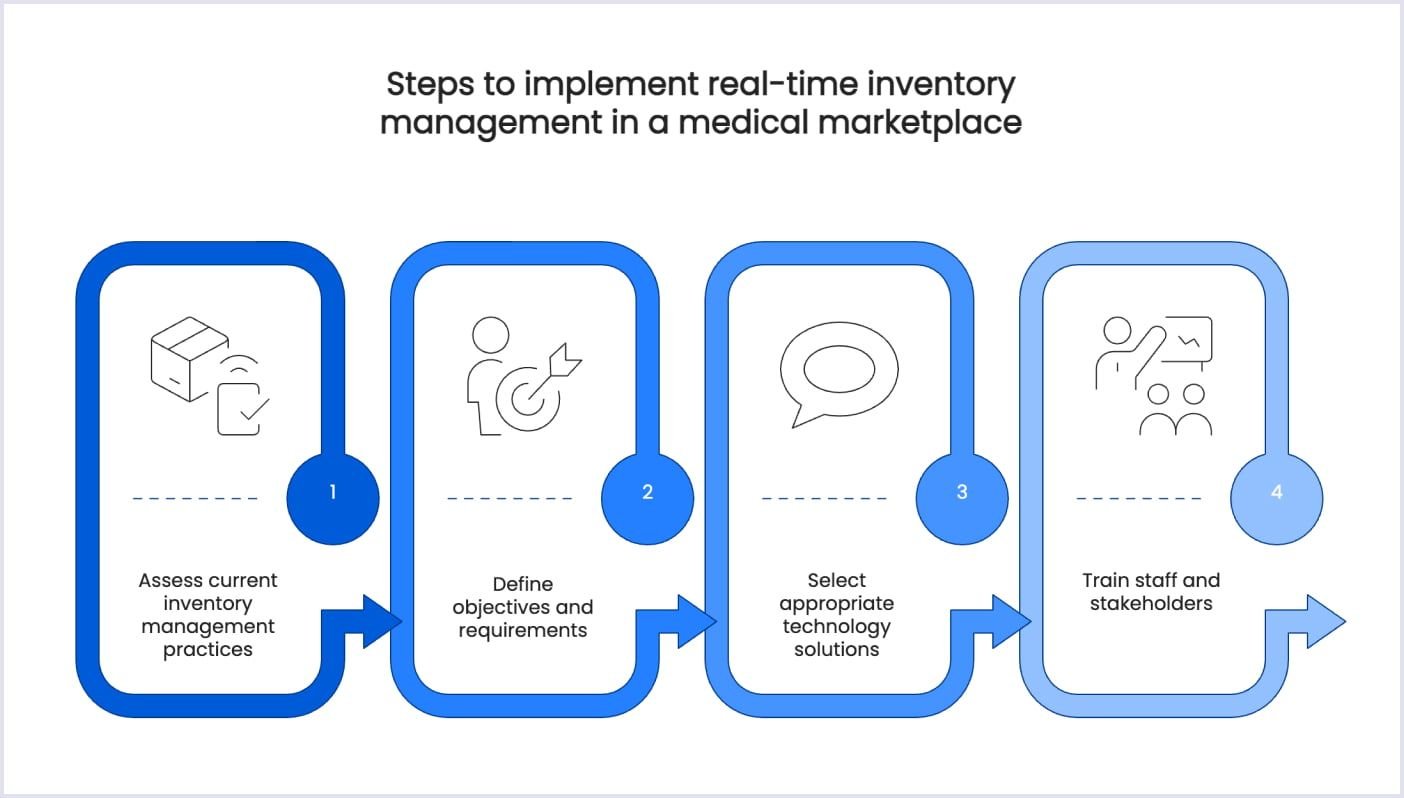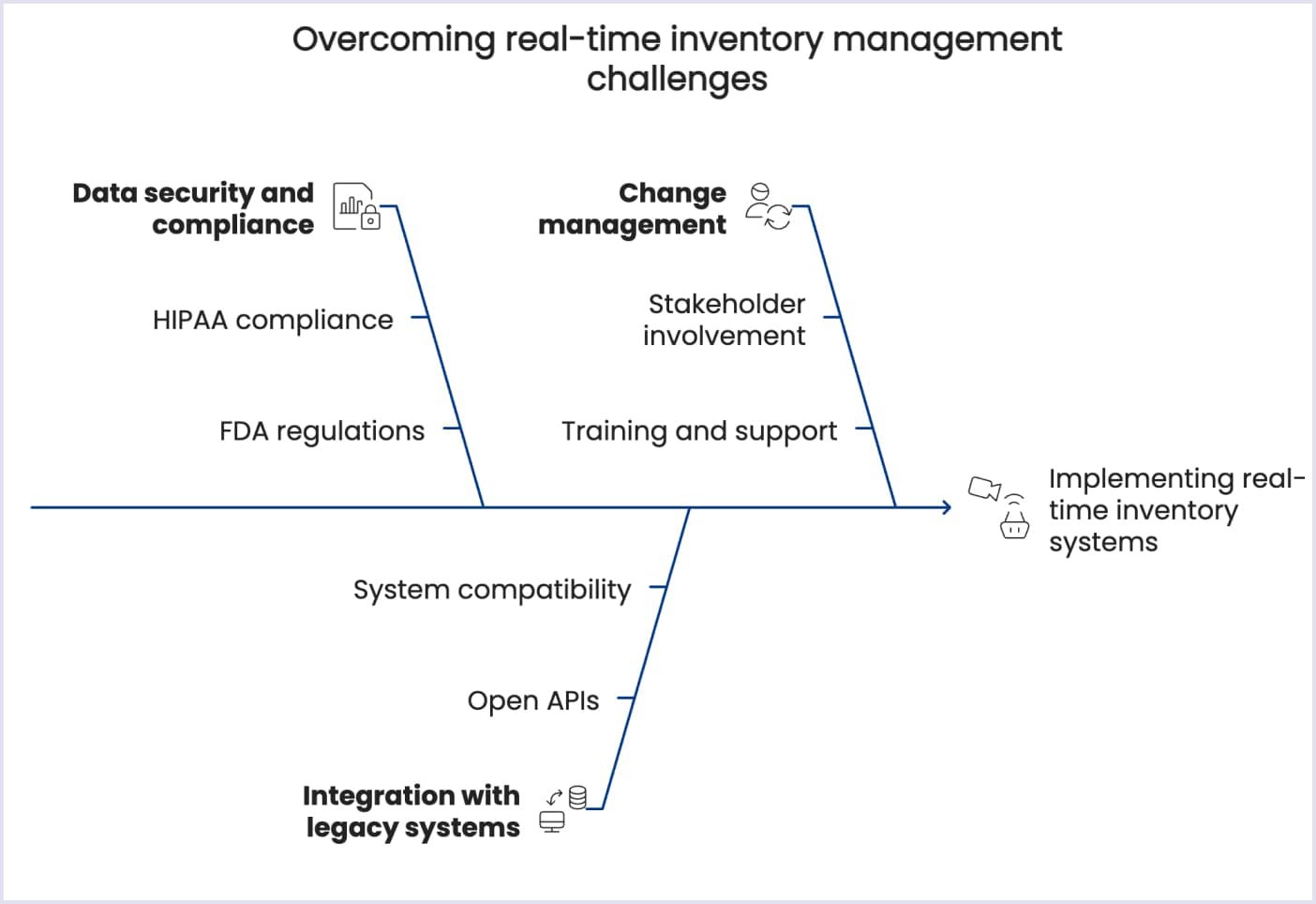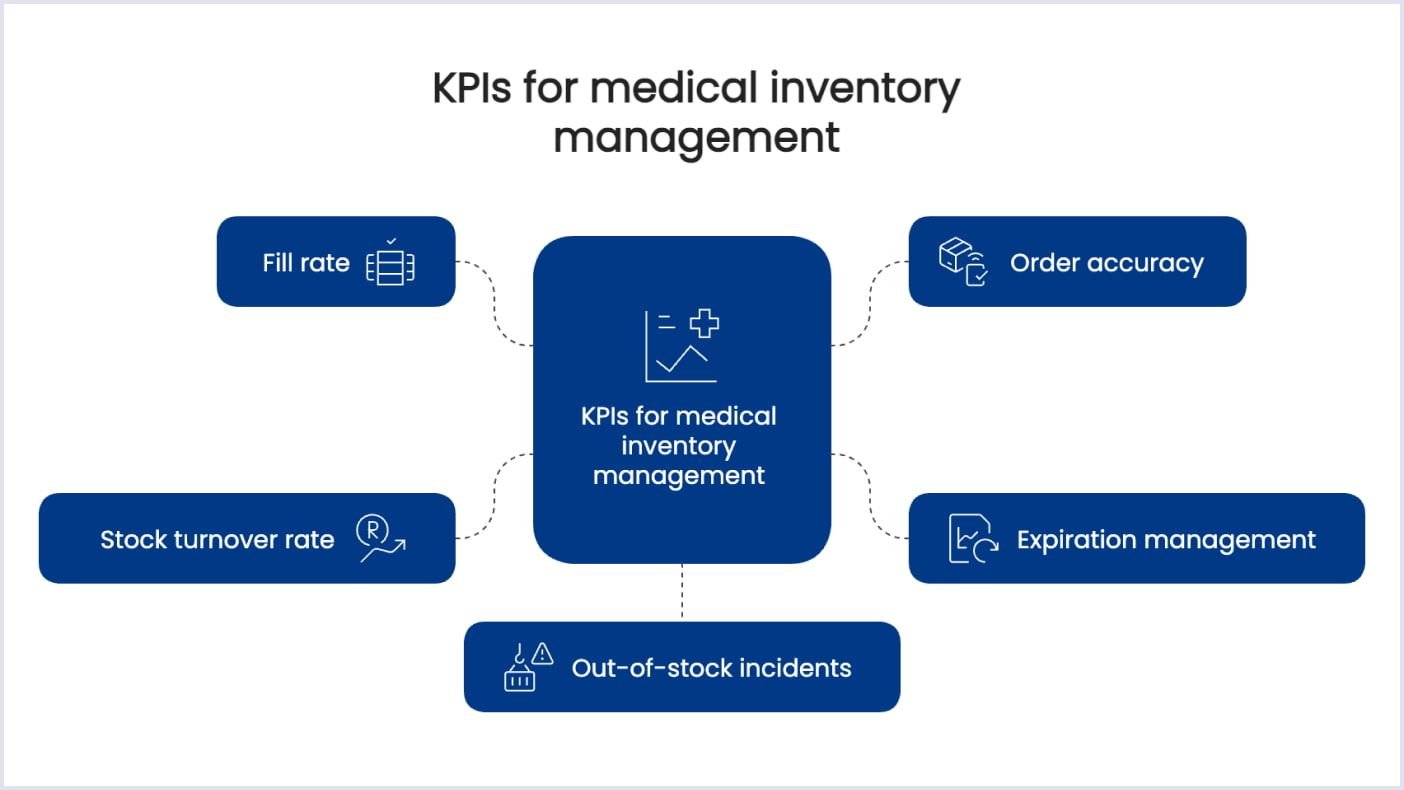Marketplaces in any niche often list hundreds of goods, all with different details, descriptions, ratings, and more. Managing them manually gets wearisome, to say the least.
This is especially the case for medical marketplaces, where each mistake can cost a lot, and the responsibility and accountability are much higher. Thus, real-time inventory management is a great solution to this issue. It’s a straightforward answer to all the most common inventory issues the marketplace might have.
So if you’re looking to build a medical marketplace and wonder about this issue, look no further. In this piece, we’ll look closer at real-time inventory management, see what benefits it can bring and how to implement it.
Understanding the medical marketplace ecosystem
Before implementing real-time inventory management, you need to figure out how the ecosystem in which it operates works. Medical marketplaces are uniquely complex, often having multiple stakeholders, strict regulatory standards, and the need for precise product availability.
Unlike general retail or ecommerce platforms, the medical space demands speed, accuracy, and compliance to ensure both operational efficiency and patient safety.
Key stakeholders in medical supply chains
The medical supply chain includes a diverse group of stakeholders, each playing a vital role in the flow of products:
- Manufacturers. Responsible for producing medical devices, pharmaceuticals, PPE, and other critical supplies.
- Distributors and wholesalers. Act as intermediaries, moving products from manufacturers to healthcare facilities and end-users.
- Healthcare providers. Hospitals, clinics, pharmacies, and labs rely on accurate inventory to deliver timely and effective care.
- Patients. Ultimately, they are the end-users of medical products, and any disruption in inventory can directly impact their health and treatment outcomes.
Real-time inventory systems must support the needs of each of these stakeholders by offering visibility, traceability, and responsiveness throughout the supply chain.
Regulatory considerations for medical inventory
Medical marketplaces must operate within a highly regulated environment. Compliance with several regulations is non-negotiable. They, for instance, are:
- FDA requirements. Medical devices and pharmaceuticals must follow strict guidelines for labeling, tracking, and expiration management.
- HIPAA compliance. Systems handling inventory data linked to patient information must safeguard privacy and data security.
- Other regional or global standards. Depending on market reach, businesses may need to comply with EU MDR, ISO 13485, or other international frameworks.
Benefits of real-time inventory solutions for medical marketplaces
In a medical marketplace, inventory management is more than just a logistical concern. It’s a matter of patient safety, regulatory compliance, and operational efficiency. Real-time inventory solutions can dramatically improve how medical products are tracked, ordered, and utilized, all to help marketplaces operate with greater precision and confidence.

Reducing stockouts and emergency orders
One of the most critical benefits of real-time inventory management is healthcare stockout prevention. When products like surgical gloves, medications, or diagnostic tools are unavailable, healthcare providers may be forced to delay treatments or place costly emergency orders.
Real-time systems track inventory across all locations and provide automated alerts when stock levels drop, allowing procurement teams to reorder proactively and maintain a consistent supply.
Minimizing overstock and expiration waste strategies
Overstocking is just as problematic as understocking, particularly with products that have expiration dates. Real-time systems enable marketplaces to balance inventory levels with insights about product movement and usage trends.
Notably, real-time hospital inventory optimization can introduce first-expire, first-out (FEFO) logic and expiration tracking. This helps reduce waste due to expired or obsolete items. It also supports better demand and healthcare supply forecasting, so you only order what you need, when you need it.
Enhancing supply chain visibility
Real-time inventory systems let you see the whole supply chain from start to finish. You can expect much better collaboration, fewer problems, and faster responses to changes in demand when everything is clear.
In addition, this lets everyone involved keep an eye on inventory amounts in real time, get accurate data, and make smart choices that increase efficiency, lower costs, and improve the health of patients.
Read also: AI-Powered Product Matching for Medical Equipment: Connecting Buyers with the Right Vendors
Steps to implement real-time inventory management in a medical marketplace

Assess current inventory management practices
Begin by thoroughly evaluating your existing inventory workflows. Identify where delays, inaccuracies, or manual bottlenecks occur. Are there frequent out-of-stocks or overstocks? Is inventory tracked manually or through outdated systems?
As such, this step involves auditing:
- Software your marketplace runs on and hardware infrastructure;
- Existing data accuracy and its availability;
- Communication and reporting workflows between stakeholders.
Understanding these gaps will help pinpoint what needs to change and will guide the technology selection and implementation process.
Define objectives and requirements
Once you’ve assessed your current system, establish clear, measurable goals for your real-time inventory integration. Your goals should align with business priorities and regulatory requirements specific to healthcare. As such, consider:
- Reducing stockouts by a specific percentage;
- Meeting FDA traceability and HIPAA compliance standards;
- Improving product expiration tracking;
- Automating low-stock alerts and reorder processes.
Select appropriate technology solutions
The success of real-time inventory management is impossible without the right tools. This includes both software platforms and hardware like barcode scanners, RFID tags, and IoT devices. When choosing a system, ensure it can:
- Provide real-time stock level updates;
- Integrate with existing ERP, PIM, or warehouse systems;
- Offer compliance features for healthcare regulations;
- Support multi-location medical inventory tracking and automated reordering.
Train staff and stakeholders
Even the best system will fall short without proper training. Your marketplace management staff, procurement teams and customer service reps need to understand how to use the new system effectively.
Thus, focus training on using scanning or tracking tools and monitoring stock levels and interpreting alerts. Make sure your people follow protocols for expiration and compliance tracking. Besides, establish a clear flow of reporting and troubleshooting for any issues that may arise during usage.

Challenges and solutions in implementing real-time inventory management
Although the benefits of real-time inventory management for medical marketplaces are crystal clear, the implementation can be challenging. Several commonplace issues must be addressed early to ensure a smooth transition and long-term success. As such, key areas of concern include data security, system compatibility, and organizational change.

Data security and compliance
Medical marketplaces work with a ton of sensitive data. It often lists product traceability, supplier details, and sometimes even patient personal information. Ensuring HIPAA compliance and adherence to FDA regulations is non-negotiable.
Solution:
Choose inventory systems that are specifically designed for healthcare. They must have built-in compliance features (i.e., audit trails, access control, and encrypted data handling). Work with vendors experienced in medical software to ensure the platform aligns with all regulatory requirements.
Integration with legacy systems
A lot of businesses are already using old ERP, warehouse, or purchasing tools. It can be hard to add a new real-time inventory system without changing how things are done now.
Solution:
Choose inventory systems that have open APIs and good integration tools. Do a full audit of the systems to find places where they can work together and make sure they are compatible before deploying them all. Middleware or methods for implementing changes in stages can sometimes make the change easier.
Read also: The Role of AI in Medical Supply Marketplaces: Smart Inventory and Demand Forecasting
Change management
Staff who aren't familiar with the technology or who are worried about how it will affect their work may be against switching from human or semi-automated processes to real-time tracking.
Solution:
Make a strong plan for managing change. As a general rule, it should include:
- Involving stakeholders early on;
- Being clear about benefits and standards;
- Providing hands-on training and ongoing support;
- Finding out what people think and changing the medical inventory workflow optimization as needed.
Measuring success: KPIs for medical inventory management
To ensure the effectiveness of real-time inventory management in a medical marketplace, medical inventory data analytics using key performance metrics (KPIs) are the way to go. They help identify gaps, optimize processes, and ensure regulatory compliance for medical supplies. For example, the ones that will tell you the most are:

- Fill rate. Finds the number of customer or facility orders that can be filled from stock that is on hand. A high fill rate means that the stock is ready, and there aren't many back orders.
- Order accuracy. Keeps track of how many right orders were delivered with no problems with quantity, item type, or condition—very important to avoid treatment delays or returns.
- Expiration management. Keeps track of how much stock is used or rotated before it goes bad. This cuts down on waste and makes sure the product is safe.
- Stock turnover rate. Shows how often stuff is used or sold over a period of time. A higher turnover rate means that medicine stock is being managed well.
- Out-of-stock incidents. Keeps track of how often important things aren't available, which can affect patient care and the supplier's credibility.
Bottom line
Clearly, real-time inventory management has more benefits than implementation challenges. Overall, it’s an integration worth investing in, given how dynamic and fast modern marketplaces become.
However, if you’ve yet to build one, refer to our marketplace development services, as it’s an all-in-one service that covers everything you need. Thus, contact us to get a quote. In the meantime, our portfolio is filled to the brim with case studies of successful marketplaces you are most welcome to browse.
